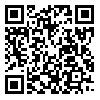Volume 75, Issue 4 (July 2017)
Tehran Univ Med J 2017, 75(4): 251-258 |
Back to browse issues page
Download citation:
BibTeX | RIS | EndNote | Medlars | ProCite | Reference Manager | RefWorks
Send citation to:



BibTeX | RIS | EndNote | Medlars | ProCite | Reference Manager | RefWorks
Send citation to:
Nazari S, Shahabi M, Mousavi Hosseini K. Pathogen inactivation of blood derived biological medicines: review article. Tehran Univ Med J 2017; 75 (4) :251-258
URL: http://tumj.tums.ac.ir/article-1-8144-en.html
URL: http://tumj.tums.ac.ir/article-1-8144-en.html
1- Department of Environmental Engineering, Islamic Azad University, Central Tehran Branch, Tehran, Iran.
2- Department of Biotechnology, Blood Transfusion Research Center, High Institute for Research and Education in Transfusion Medicine, Tehran, Iran.
3- Department of Biotechnology, Blood Transfusion Research Center, High Institute for Research and Education in Transfusion Medicine, Tehran, Iran. ,mkmousavi@yahoo.com
2- Department of Biotechnology, Blood Transfusion Research Center, High Institute for Research and Education in Transfusion Medicine, Tehran, Iran.
3- Department of Biotechnology, Blood Transfusion Research Center, High Institute for Research and Education in Transfusion Medicine, Tehran, Iran. ,
Abstract: (4661 Views)
One of the main sources of a wide range of biological products as starting material is the human blood. These biological human plasma derived medicines play essential role in prevention and treatment of a variety of life threatening diseases. Mention to the starting material of these medicines which is blood or in another word human plasma, possibility of contamination by blood borne viruses cannot be omitted.
In recent years possibility of contamination by blood borne viruses such as hepatitis B virus (HBV), hepatitis C virus (HCV), and human immunodeficiency virus (HIV) is an important concern. Nowadays most of developed countries the risk is minimum, although in developing countries it is still a challenge. Despite measures for human plasma biological derived medicines safety, such as donor selection, testing of donations, and polymerase chain reaction (PCR) testing on pooled plasma, still more actions are needed to inactivate or remove viruses such as HBV, HCV and HIV. During the process of manufacturing of biological human plasma medicines, there is several production steps which may contribute to viral reduction. These steps consist of precipitation by centrifugation, ethanol, polyethylene glycol, octanoic acid, or ammonium sulphate, chromatographic methods such as immunoaffinity chromatography or ion exchange chromatography, adsorption by aluminum hydroxide, and separation by filtration. All these steps are considered to be weakly effective as viral reduction treatment, and more effective viral inactivation methods are needed to be implemented in line of production of human plasma derived biological medicinal products. These safety measures included virus inactivation by different techniques such as acidic pH, solvent/detergent method, pasteurization and heat treatment, beta-propiolactone plus U/V and also virus removal by nanofiltration, which all these virus inactivation or virus removal methods before implementation in line of production of plasma derived biological medicines, should undergo for validation study.
In recent years possibility of contamination by blood borne viruses such as hepatitis B virus (HBV), hepatitis C virus (HCV), and human immunodeficiency virus (HIV) is an important concern. Nowadays most of developed countries the risk is minimum, although in developing countries it is still a challenge. Despite measures for human plasma biological derived medicines safety, such as donor selection, testing of donations, and polymerase chain reaction (PCR) testing on pooled plasma, still more actions are needed to inactivate or remove viruses such as HBV, HCV and HIV. During the process of manufacturing of biological human plasma medicines, there is several production steps which may contribute to viral reduction. These steps consist of precipitation by centrifugation, ethanol, polyethylene glycol, octanoic acid, or ammonium sulphate, chromatographic methods such as immunoaffinity chromatography or ion exchange chromatography, adsorption by aluminum hydroxide, and separation by filtration. All these steps are considered to be weakly effective as viral reduction treatment, and more effective viral inactivation methods are needed to be implemented in line of production of human plasma derived biological medicinal products. These safety measures included virus inactivation by different techniques such as acidic pH, solvent/detergent method, pasteurization and heat treatment, beta-propiolactone plus U/V and also virus removal by nanofiltration, which all these virus inactivation or virus removal methods before implementation in line of production of plasma derived biological medicines, should undergo for validation study.
| Nowadays by screening and testing of donations and implementation of different measures of virus inactivation or virus removal, a good level of safety of plasma derived biological medicines has been achieved. Due to the possibility of emerging new pathogens investigation in this subject should be continued. |
Type of Study: Review Article |
Send email to the article author
| Rights and permissions | |
 |
This work is licensed under a Creative Commons Attribution-NonCommercial 4.0 International License. |





